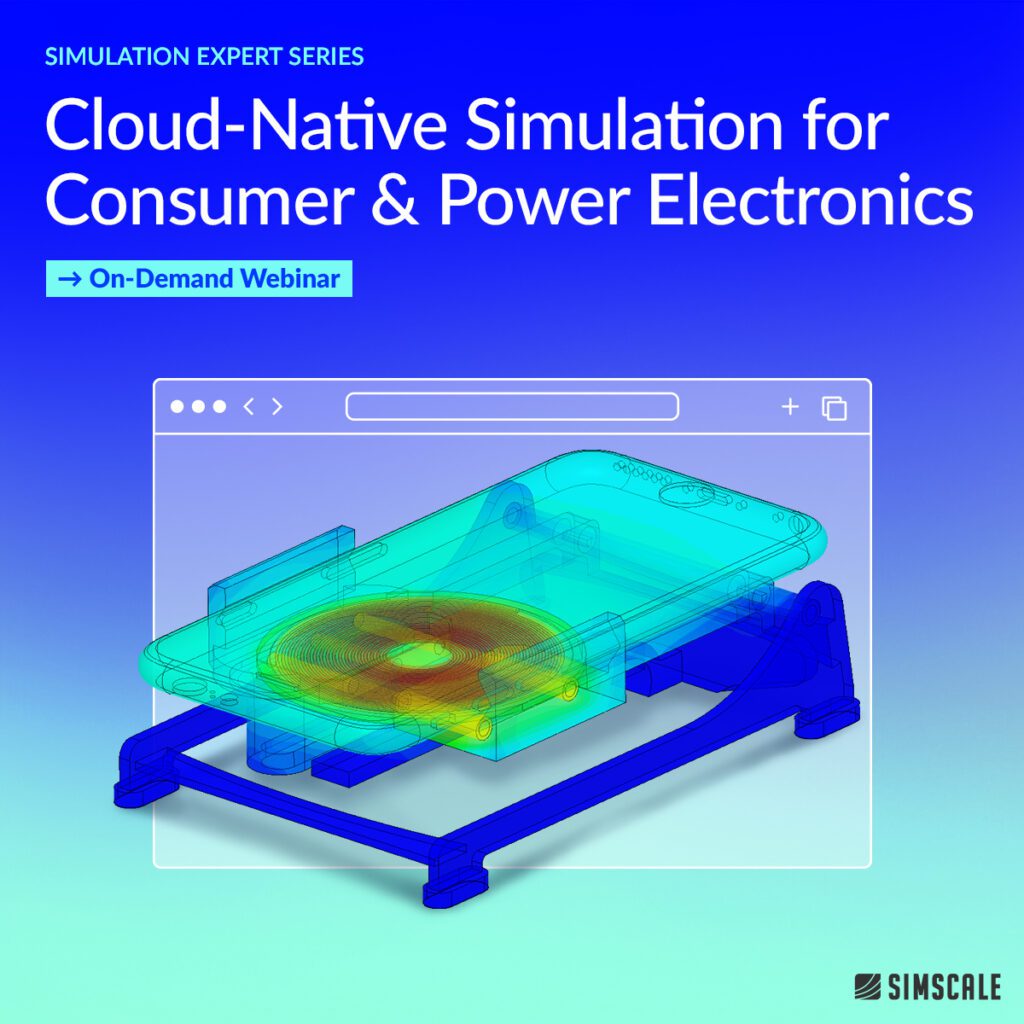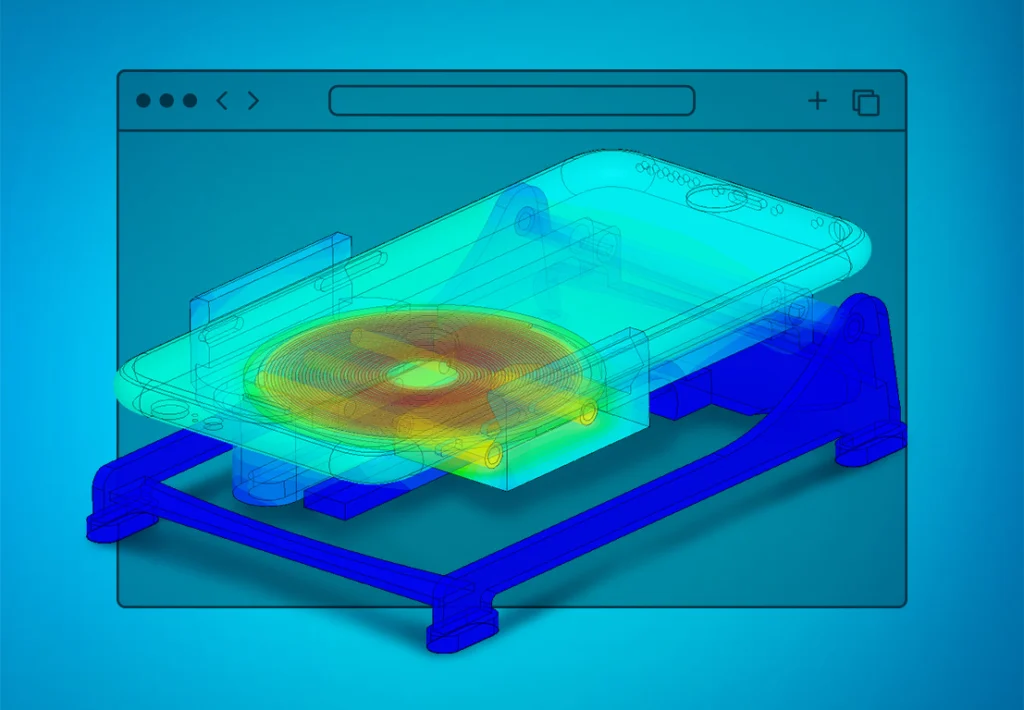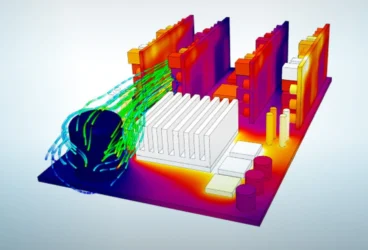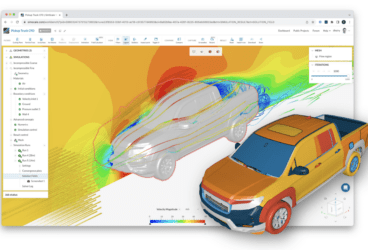SimScale recently held a webinar on cloud-native simulation for consumer and power electronics, offering insights into how engineers can leverage advanced simulation tools to improve device efficiency and performance. Here are the top five takeaways from the session.
On-Demand Webinar
If these highlights caught your interest, there are many more to see. Watch the on-demand Simulation Expert Series webinar from SimScale on Cloud-Native Simulation for Consumer & Power Electronics by clicking the link below.
1. Efficient Design of Wireless Charging Devices
Matthew Bemis, Senior Application Engineer at SimScale, demonstrated how cloud-native simulation can optimize wireless charging devices, such as smartphone holders. By analyzing electromagnetic, thermal, and structural performance, SimScale enables engineers to improve power transfer efficiency, thermal management, and structural stability—all in one platform.
2. Multiphysics Capabilities Streamline Innovation
One of the standout features is SimScale’s ability to integrate multiple sets of physics, including time-harmonic electromagnetic analysis, conjugate heat transfer, and structural analysis. This allows engineers to explore the interplay between different physical phenomena—such as heat generation and electromagnetic interference—without switching platforms or tools, saving both time and resources.
3. Impact of Material Selection on Performance
The session highlighted how material choices, such as using ferrite shields, can significantly improve device performance by enhancing magnetic flux density and reducing heat losses. Through real-time analysis, designers can iterate quickly, testing different materials and configurations to achieve optimal performance without physical prototypes.
4. Enhanced Collaboration and Cloud-Native Advantages
SimScale’s cloud-native platform offers seamless collaboration, allowing teams across different time zones to work on the same project simultaneously. Engineers can access simulations anywhere with an internet connection, ensuring faster project turnarounds and eliminating the need for specialized hardware or software installations.
5. Automated Analysis for Faster Results
A key benefit of using SimScale is its ability to run multiple simulations in parallel, drastically reducing lead times. For example, users can conduct a range of tests—such as varying ambient temperatures for thermal analysis—simultaneously, leading to quicker decision-making and design optimization.
Driving Innovation in Electronics with Simulation
The future of consumer and power electronics hinges on the ability to innovate quickly and efficiently. Cloud-native simulation, with its multiphysics capabilities and real-time collaboration, is transforming the design process. Engineers can now explore design variations, optimize material choices, and ensure thermal stability at unprecedented speeds. Companies that adopt these tools will be well-positioned to lead in an increasingly competitive electronics market. The question is: Are you ready to embrace the future of simulation?




